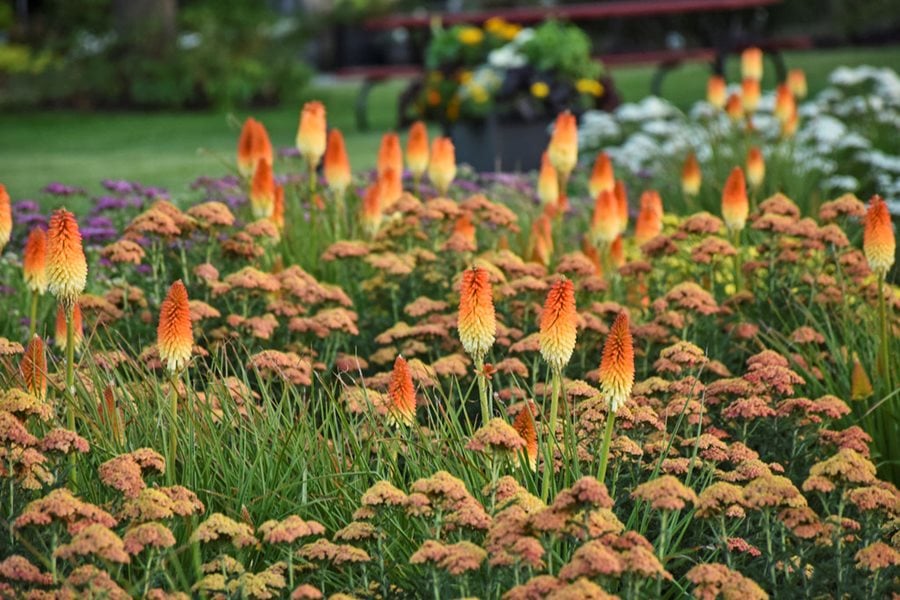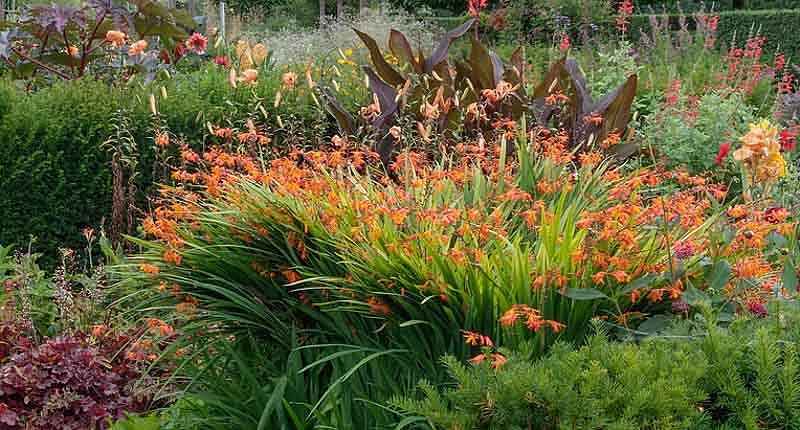Best Red Hot Poker Companion Plants
Title: Best Red Hot Poker Companion Plants
Introduction:
Red hot pokers (Kniphofia) are striking perennials that add a touch of drama to any garden. With their tall, spiky flowers that come in a variety of colors, red hot pokers are sure to turn heads. But what plants should you pair them with?
In this blog post, we'll take a look at some of the best companion plants for red hot pokers. We'll discuss the different factors to consider when choosing companion plants, and we'll provide a list of specific plants that work well with red hot pokers.
Main Content:
When choosing companion plants for red hot pokers, there are a few factors to keep in mind. First, you'll need to consider the size and growth habit of the red hot pokers. Red hot pokers can grow quite tall, so you'll need to choose companion plants that won't be overshadowed. You'll also need to consider the sun exposure needs of the red hot pokers. Red hot pokers prefer full sun, so you'll need to choose companion plants that can tolerate the same amount of sunlight.
Once you've considered these factors, you can start to narrow down your choices. Here are a few of the best companion plants for red hot pokers:
- Ornamental grasses: Ornamental grasses add height and texture to the garden, and they can help to balance out the verticality of the red hot pokers. Some good choices for ornamental grasses include feather reed grass, switchgrass, and miscanthus.
- Perennials with spiky flowers: Perennials with spiky flowers, such as liatris, gaillardia, and heliopsis, can provide a complementary contrast to the red hot pokers. These plants will add interest to the garden throughout the summer and fall.
- Perennials with colorful foliage: Perennials with colorful foliage, such as coleus, heuchera, and hosta, can add a splash of color to the garden and help to fill in the space around the red hot pokers.
- Annuals: Annuals can be a great way to add seasonal color to the garden. Some good choices for annuals that pair well with red hot pokers include cosmos, sunflowers, and zinnias.
Conclusion:
By considering the factors mentioned above, you can choose the perfect companion plants for your red hot pokers. With the right companions, your red hot pokers will thrive and add a touch of beauty and drama to your garden for years to come.
Red hot pokers (Kniphofia) are striking plants that add a bold touch of color to any garden. But what plants should you grow alongside them? Some good companion plants for red hot pokers include:
- Dahlias – Red hot pokers and dahlias are both heat-loving plants that thrive in full sun. They also come in a wide range of colors, so you can mix and match them to create a colorful display.
FAQ of red hot poker companion plants
- What are some good companion plants for red hot pokers?
Some good companion plants for red hot pokers include:
- Dahlias
- Daylilies
- Heliopsis (false sunflower)
- Asters
- Salvia
- Gaillardia (blanket flower)
- Liatris
- Lamb's ear
- Baptisia (false indigo)
These plants all have similar growing requirements to red hot pokers, and they will complement each other's colors and textures. For example, dahlias and daylilies come in a wide range of colors, and they can be planted in front of red hot pokers to add a splash of color. Heliopsis and asters are both tall plants that can be planted behind red hot pokers to add height and structure. Salvia and gaillardia have spiky blooms that contrast nicely with the upright flower spikes of red hot pokers. Liatris and lamb's ear have softer textures that can help to balance out the boldness of red hot pokers. And baptismia has blue-green foliage that provides a striking contrast.
- What should I avoid when choosing companion plants for red hot pokers?
When choosing companion plants for red hot pokers, it is important to avoid plants that have different water or sunlight requirements. Red hot pokers are drought-tolerant plants that need full sun. So, you should avoid planting them with plants that need more water or shade.
You should also avoid planting red hot pokers with plants that are susceptible to the same pests or diseases. For example, red hot pokers are susceptible to rust, so you should avoid planting them with plants that are also susceptible to rust.
- How do I plant red hot pokers with companion plants?
When planting red hot pokers with companion plants, it is important to space the plants properly. Red hot pokers need plenty of room to grow, so you should space them at least 2 feet apart. You should also plant the companion plants at the same depth as the red hot pokers.
Once the plants are planted, you should water them well. You may need to water them more frequently during the first few weeks after planting, especially if the weather is hot and dry.
- How do I care for red hot pokers and their companion plants?
Red hot pokers are relatively easy to care for. They need full sun and well-drained soil. You should water them regularly, especially during the hot summer months. You may need to fertilize them once a month during the growing season.
The companion plants that you choose will also have their own specific care requirements. Be sure to do some research to learn about the care needs of the plants that you choose.
- How do I propagate red hot pokers?
Red hot pokers can be propagated from seed or by division. To propagate from seed, sow the seeds in the spring in a well-drained soil mix. The seeds need a chilling period, so you can either refrigerate them for a few weeks before sowing or sow them outdoors in the fall. The seedlings will need to be transplanted in the spring after they have grown a few sets of leaves.
To propagate by division, dig up a mature plant in the spring or fall. Use a sharp knife to divide the plant into several sections, each with a healthy root system. Replant the divisions in the same day or replant them in pots and wait until the spring to plant them outdoors.
Image of red hot poker companion plants
10 images of red hot poker companion plants that are free to use:
- Daylily (Hemerocallis). Daylilies are a classic companion plant for red hot pokers. They bloom at the same time and have similar light and soil requirements.

- Echinacea (Echinacea purpurea). Echinacea is another popular companion plant for red hot pokers. It attracts butterflies and bees, which helps to pollinate the red hot pokers.

- Astilbe (Astilbe x arendsii). Astilbe is a shade-tolerant plant that can help to fill in the spaces around red hot pokers. It also blooms at the same time as red hot pokers, adding a touch of delicateness to the arrangement.

- Crocosmia (Crocosmia x crocosmiiflora). Crocosmia is a colorful relative of the gladiolus. It blooms in the summer and fall, and its orange and yellow flowers complement the red hot pokers nicely.

- Coreopsis (Coreopsis grandiflora). Coreopsis is a sunny annual that blooms from early summer to fall. Its yellow flowers add a touch of brightness to any garden, and they attract butterflies and bees.

- Verbena (Verbena bonariensis). Verbena is a tall, airy perennial that blooms from summer to fall. It's a good choice for borders and meadows, and it can help to add height and texture to an arrangement with red hot pokers.

- Salvia (Salvia nemorosa). Salvia is a drought-tolerant perennial that blooms from early summer to fall. It comes in a variety of colors, including blue, purple, and white.

- Lavender (Lavandula angustifolia). Lavender is a fragrant perennial that blooms in the summer. It's a good choice for Mediterranean-style gardens, and it can help to attract bees and butterflies.

Post a Comment for " Best Red Hot Poker Companion Plants"